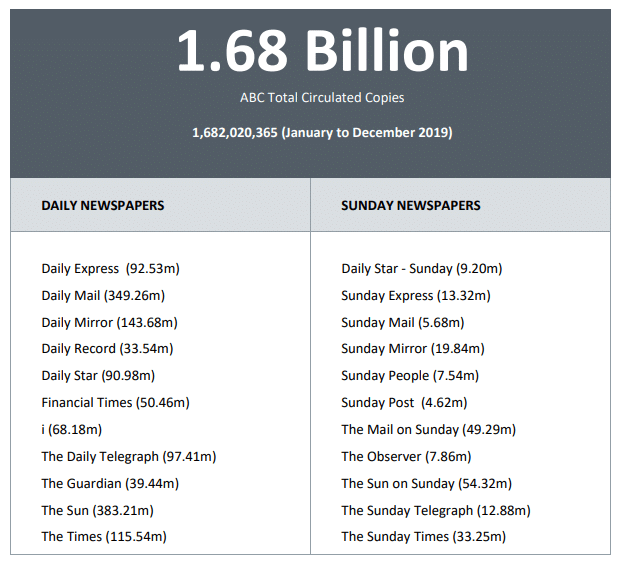
The Telegraph Media Group (TMG) said it would instead publish its core subscriber numbers each month for the first time as it focuses on its target of reaching 10m registered users and 1m paying subscribers by 2023.
The move comes as the number of paying digital Telegraph subscribers surpassed the number in print for the first time in its 164-year history last month.
TMG, which also publishers The Sunday Telegraph, said it will remain “transparent” with its core subscriber numbers (across all channels) and it will communicate these numbers each month, sharing both volumes and average revenue per subscription.
The new figures will be “independently assured” by PWC, with the next audit to take place in March.
Auditing circulation figures remain vital, but the rise of programmatic ad platforms means individual publishers have lost much of their influence as brand look for segmented audiences across publications rather than single destinations.
“The Audit Bureau of Circulations results published, today, January 16th, are the final set of ABC results Telegraph Media Group will take part in,” the company said.
“The ABC metric is not the key metric behind our subscription strategy and not how we measure our success.”
The latest ABC figures, published today, were the last that will include the Daily and Sunday Telegraph titles, the group confirmed.
They show the Daily Telegraph had an average circulation of 317,817 last month while the Sunday Telegraph was on 248,288. Both saw a 12 per cent decline from December 2018.
The title said it had 213,868 digital subscribers and 209,443 in print in December, and claimed it had a “very healthy” average revenue per subscription of £194.
All other national newspapers still take part in the ABC audit, whose chief executive said the decision was “clearly disappointing”.

Simon Redlich said: “We understand the Telegraph’s wish to promote their growing subscription numbers across print and digital, but believe that doing so via an industry-agreed ABC standard would be the best route. We see it as a straightforward development of current reporting and remain open to working with the Telegraph, as with all publishers, on developing metrics which support their strategies.”
The news comes after the marketing body representing newsbrands, Newsworks, had questioned the “narrative of decline” ABC audits tended to highlight in a multi-platform, digital market, and had appeared keen to shift the industry towards using PAMCo’s multi-platform readership figures as a better measure.
In a statement, TMG said: “At the Telegraph Media Group, we are delighted with the progress that we have made to future proof our journalism to thrive long term, delivering a transformation whilst maintaining profitability. The group is focused on a subscriber-first strategy underpinned by long term investment in The Telegraph’s digital transformation. This is evidenced by the number of paying subscribers and registrants since we switched to a paywall format and registered-access model… whilst maintaining a very healthy average revenue per subscription.”
TMG said that the election meant its politics section was its “biggest subscription driver” in December, which became a record month for new sign ups.
Who else might publishers use?
The Audit Bureau of Circulations (ABC) has long been the standard metric for UK publications to measure circulation. But with a changing readership switching from print to digital and a shift toward automated ad auctions, publishers are looking at new ways of measuring success and audiences.
Here are some alternative options:
- Rival auditors such as Pricewaterhouse Coopers (PWC)
- Industry bodies such as the IAB or AOP
- Programmatic platforms on the supply side (SSP) such as Rubicon Project, AppNexus, Oath, Pubmatic or Google Ad Manager.
- Analytics software such as Adobe or Google
Danny Meadows-Klue, former publisher of the digital editions of The Telegraph told us that: “The marketing industry has moved on – yet newspapers haven’t. In today’s world, marketers are more interested in the quality of the audience to the specific adverts that are being shown rather than the topline numbers of the titles’ size. What The Telegraph is doing is signalling a new direction for measurement.”
However, Meadows-Klue sees the focus of audits as far more than the viewers of the media publisher’s site: “Smart marketers will also be looking for the quality assurance of an audit that the profile of the advertising trafficking bought through a trading desk matches the brand’s needs. Audience segments that may look the same on the surface, can vary massively in quality once you dive deep into how they were created. As the focus of media data moved from the publisher sites to the programmatic platforms and the trading systems, it’s essential the oversight and scrutiny follows the money.”
